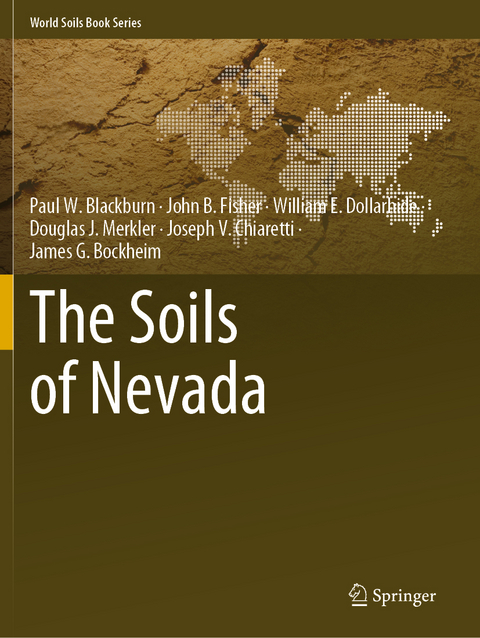
The Soils of Nevada
Springer International Publishing (Verlag)
978-3-030-53159-1 (ISBN)
This book discusses Nevada in the context of the history of soil investigations; soil-forming factors; general soil regions; soil geomorphology; taxonomic structure of the soils; taxonomic soil regions; soil-forming processes; benchmark, endemic, rare, and endangered soils; and use of soils.
With an average mean annual precipitation of 175 mm (7 in), Nevada is the driest state in the USA. More than three-quarters (89%) of the state has been mapped and the first soil survey was completed in 1909. Nevada is divided into 10 major land-resource areas and features two large deserts (the Great Basin Desert and the Mojave Desert), and over 100 north-south trending enclosed basins separated by mountain ranges (Basin and Range Province), several of which have peaks exceeding 3,400 m. Further, the soils of Nevada represent seven of the 12 globally recognized orders, 29 suborders, 69 great groups, and over 1,800 soil series, and some of the classic research on the origin of duripans andpetrocalcic horizons was conducted in the state. This book presents the first report on the soils of Nevada and provides the first soil map of Nevada utilizing soil.
lt;p>Paul W. Blackburn began working as a Soil Scientist for the SCS, later to become the NRCS, in June 1976. Paul retired as an MLRA Project Office Leader in January of 2018 with a total of 41 years of service. Paul is enjoying staying close to home, doing small home remodel projects, and teaching grandsons about soils.
John B. Fisher worked over 41 years as a Soil Scientist in Nevada with NRCS before retiring as a Senior Regional Soil Scientist in 2017. John lives in Reno and enjoys reading, gardening, and playing with his grandsons.
William E. Dollarhide transferred to Nevada NRCS in 1969. He served as a Soil Scientist, Project Leader, Assistant State Soil Scientist, State Soil Scientist, and Major Land Resource leader before retiring in 2010, after 41 years of service. Bill lives in Reno with his family and enjoys gardening and playing senior softball.Douglas J. Merkler began working as a Soil Scientist for the SCS, later to become the NRCS, in September 1978. Douglas retired as a Resource Soil Scientist for Nevada in July of 2017, just shy of 39 years of service. Douglas remains active in the Soil Science Society of America and the International Biogeographic Society, is currently teaching at Nevada State College, and has started a resource-oriented, drone-based consulting firm with his wife in retirement.
Overview.- History of Soil Studies in Nevada.- Soil-Forming Factors.- General Soil Regions of Nevada.- Soil Geomorphology of Nevada.- Diagnostic Horizons and Taxonomic Structure of Nevada Soils.- Taxonomic Soil Regions of Nevada.- Aridisols.- Mollisols.- Entisols.- Inceptisols.- Alfisols, Vertisols, and Andisols.- Soil-Forming Processes in Nevada.- Benchmark, Endemic, Rare, and Endangered Soils in Nevada.-Land Use in Nevada.- Conclusions.
| Erscheinungsdatum | 07.10.2021 |
|---|---|
| Reihe/Serie | World Soils Book Series |
| Zusatzinfo | XV, 301 p. 104 illus., 84 illus. in color. |
| Verlagsort | Cham |
| Sprache | englisch |
| Maße | 210 x 279 mm |
| Gewicht | 791 g |
| Themenwelt | Naturwissenschaften ► Biologie ► Ökologie / Naturschutz |
| Naturwissenschaften ► Geowissenschaften ► Geologie | |
| Weitere Fachgebiete ► Land- / Forstwirtschaft / Fischerei | |
| Schlagworte | Arid Lands • Environmental Geography • Nevada • Soil Classification • Soil Formation • Soil Geography |
| ISBN-10 | 3-030-53159-7 / 3030531597 |
| ISBN-13 | 978-3-030-53159-1 / 9783030531591 |
| Zustand | Neuware |
| Haben Sie eine Frage zum Produkt? |
aus dem Bereich


